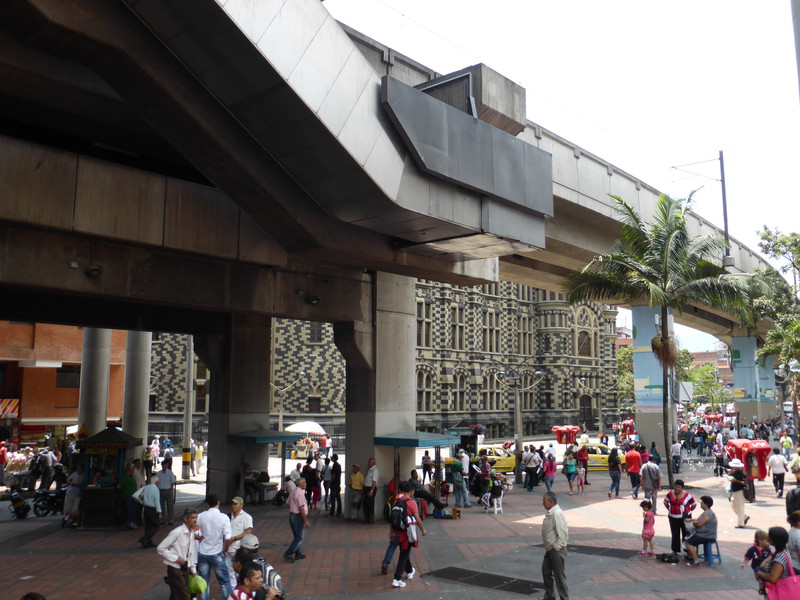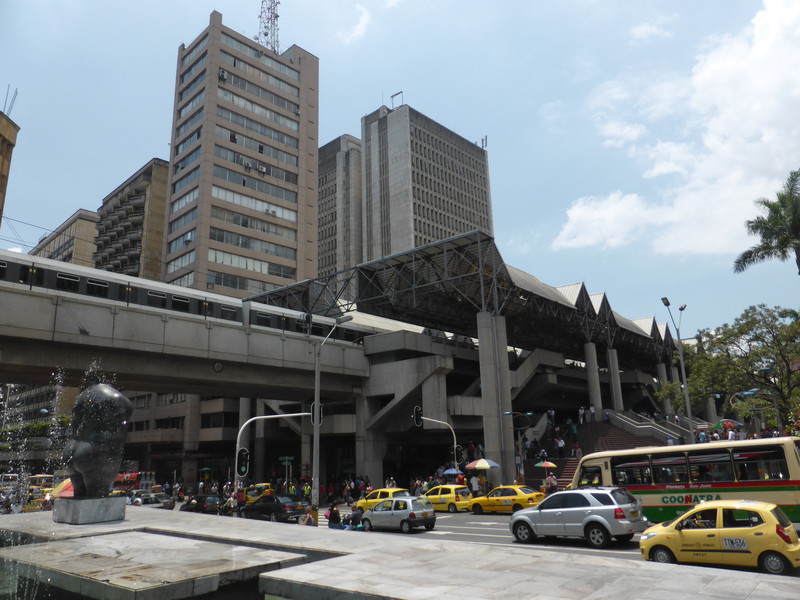
We weren't terribly well in Medellín, but we still managed to see a fair amount of the city, albeit gently and without a great deal of energy. This was mainly down to the fact that Medellín has a wonderful metro that makes getting around a doddle, so even those recuperating from a mystery illness can hobble round the main sights without having to cram into a public bus or spend a fortune on taxis.
First opened in 1995, the Medellín Metro is small, with only two lines (A and B) and three cable cars (J, K and L), but because Medellín is stretched out along a north-south valley, this manages to cover all the main tourist attractions without the complexity of most city metros. Line A follows the course of the Medellín River along the valley, and as the railway is carried through the city centre on viaducts that pass well above the heads of the crowds below, it's a brilliant way to see the city from above, passing churches at roof height and letting you peer into office buildings and down into the plazas as you safely slip through the centre.

The trade-off for this convenience is that the city is carved up by the huge elevated tracks and monstrous concrete columns that lift the Metro above the streets, and some of the city's plazas have been completely redefined by the development; for example, the eastern end of Plazoleta de las Esculturas, probably Medellín's most famous square, is now chopped off by the curved Metro line that brushes right past the chequerboard frontage of the Palacio de la Cultura Rafael Uribe Uribe. As a result you can hardly see that side of the palace at all and have to duck under the Metro to see it in all its glory, though I have to say I quite like the way the Metro merges with the city; I've always enjoyed seeing the new and the old mixed up like this, and although the Metro is a fairly blunt example, it does give Medellín a slightly futuristic feel, even if it's a future that feels ever-so-slightly like it was designed back in the concrete heyday of the 1960s.

This clash of old and new extends to the ticketing system, which seems a little unsure whether it's retro or modern; when buying two single tickets, we either got given two paper tickets, two credit-card-sized smart cards, or a single smart card between us, depending on where we bought them. Getting two tickets was fine, but the single smart card, which comes loaded up with two tickets on one card, is a deeply confusing beast; it seems that if there is more than one credit on your card, then you have to wave it at the ticket barrier to get through, but if there is just one credit, then you have to stick it in a slot so the barrier can retain it. This is all well and good, but there's no way of telling how many credits you have on the card just by looking at it, so you end up with people waving their cards and being refused entry, even though they do indeed have a valid ticket, and then panicking and wondering what to do next. Presumably that's why there are so many staff by the ticket barriers, helping out all the bemused travellers.
Oh, and once you're on the move, you'll find that the Metro map is only posted in the most inaccessible part of the car and the text on the map is tiny, so if you get on the train and aren't sure where you should be getting off, you have to squish your way through the carriage and squint at the map. But these criticisms are splitting hairs, because the Metro is a brilliant idea that is well executed, and it makes exploring Medellín a pleasure rather than a chore.